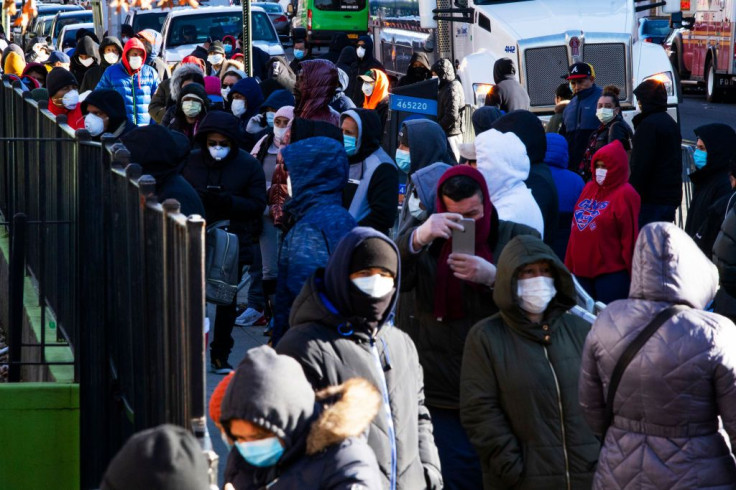US Coronavirus Cases To Peak In 3 Weeks, Experts Predict

With new confirmed COVID-19 cases in the United States now increasing by anywhere from 8,000 to 10,000 cases per day, the argument is being made the country might be approaching a peak in infection numbers.
That seems to be the professional opinion of Dr. Ira Longini, a professor and epidemiologist at the Center for Statistics and Quantitative Infectious Diseases at the University of Florida, who also advises the U.S. Centers for Disease Control and Prevention (CDC).
Based on complex mathematical models, Dr. Longini estimates the peak of deaths in America's COVID-19 pandemic will occur in about three weeks from now. He also forecasts "most of the damage will be done" in the weeks leading up to this infection peak.
"I would guess the U.S. will hit a peak in deaths in the next two to three weeks, as the doubling time seems to be about two to three days," said Dr. Longini. "Maybe a partial lifting of the shelter-in-place for those less vulnerable may make some sense in about three weeks. By then, much of the damage will have been done."
His estimate U.S. deaths might apex in less than a month will also mean the U.S. must endure a horrific outcome based on the experience of other countries. This terror will see a sudden and huge surge in deaths that will bring the already stretched and fragmented U.S. health system close to its breaking point.
Asked if there might be a "second wave," or the risk of a relapse when the virus returns in the following weeks, Dr. Longini said if the relapse was "limited, and we continued to protect the most vulnerable, that may be acceptable for now. Also, let's see what happens in the next two-three weeks. We can also keep an eye on China as they begin to relax restrictions there."
Dr. Longini's estimate is broadly similar to that of two other experts. Dr. William Schaffner, an infectious disease specialist at Vanderbilt University, said the peak might occur three weeks from now.
"My notions are harmonious in that I also anticipate ... (the next) three to six weeks will be critical here in the United States," said Dr. Schaffner told CNN. He believes it might take six weeks for the peak to be reached.
That's because the U.S. is a "very diverse country with a hotspot in New York right now and warm spots. The rest of the country is warming up. In the next three to six weeks, all those areas will start to surge or will have their curve depressed or blunted by the social distancing that's going on. The virus will tell us."
He said he's skeptical about president Donald Trump being able to lift restrictions on only part of the population.
"Asking a subset to remain sheltered in place, to remain in home, that's more difficult to do," he pointed out.
Dr. Arnold Monto, a professor of epidemiology at the University of Michigan School of Public Health, also agrees with Dr. Schaffner.
"I agree that by three weeks, we will have a better idea of what is going to happen going forward," according to Dr. Monto. "The outbreaks seem to be hitting different communities at different times and at different intensities, so it is hard to generalize However, I agree in general. And that is why action now in terms of social distancing is so important."





















